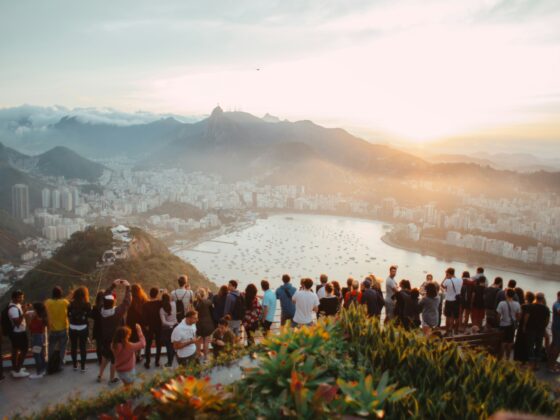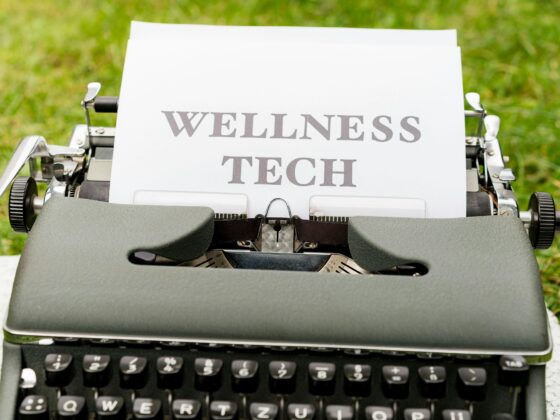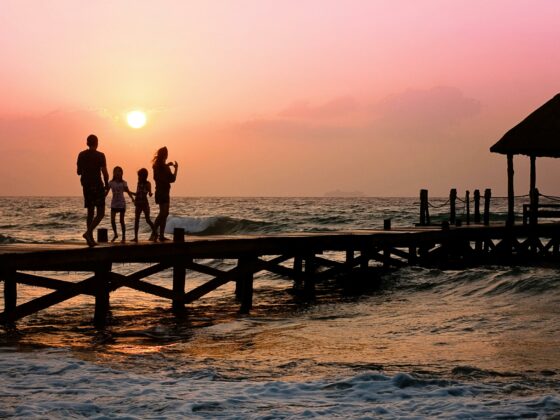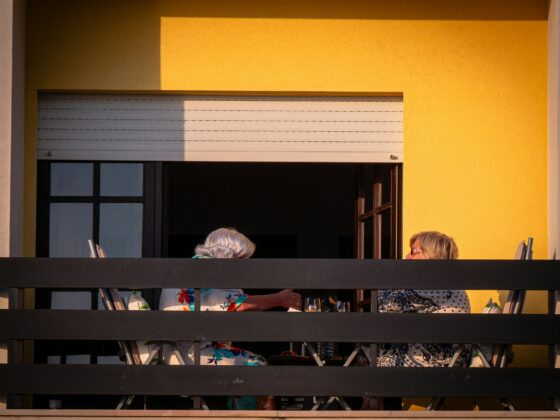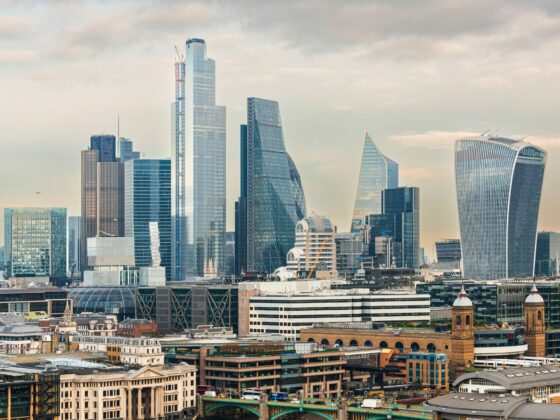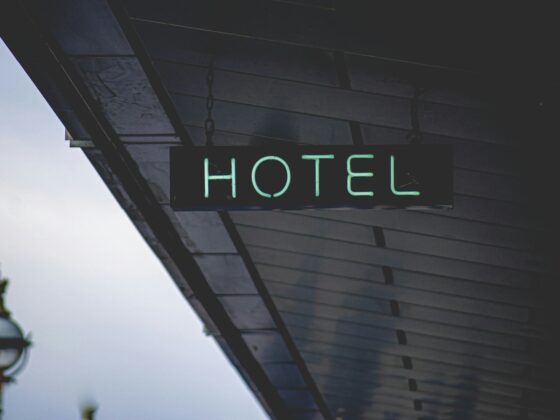Josiah (00:00): Today we’re sitting down with Lily Ackerman, the founder and director of Ackerman Design Studios, whose roots in the hospitality industry have shaped her unique approach to art in hotels. In this episode, we dive into why art matters, including its role in storytelling and placemaking, essential ingredients for creating that unforgettable atmosphere that travelers and guests today crave. Lily shares insights from recent projects that showcase the impact of art from collaborations with iconic artists to discovering fresh emerging talent. This conversation is packed with practical insights on how to use art to enhance the hospitality you provide. So let’s get into it.
[intro]I hear hospitality providers around the world intrigued by the power of art, and you have done this at some of the world’s best hotels. So I would love for our listeners, for our viewers to get to know you a little bit more, and maybe one of the ways that we could do that is before we started recording, you were talking about key influences in your life and one of those I understand was your father. I wonder if you could share a little bit about your father, what you learned from him about hospitality and about experience that informs your work today.
Lily (01:48):
Yeah, I would love to. He was a huge influence on me and growing up, I grew up in hospitality. That was his background. He owned restaurants and hotels and was always talking about that emotional connection and the power of how a space makes you feel and all of the different components that goes into, so kind of growing up that was absolutely central to me and his legacy was that I was very intrigued about how spaces impact people emotionally, what they’re connecting with on every level. And I really feel like today, now more than ever, that feeling of authenticity and understanding why a brand is the way it is or what they’re trying to say is so important. And so I feel his influence and I guess guiding hand in a lot of what I do and also the ability to use younger, more emerging artists in innovative ways with brands that may not have come across them before. So it’s a really exciting way to platform that and that influences all that I do really. So I actually weirdly come at it from more of a hospitality background than I do in art background, which is somewhat unusual.
Josiah (03:10):
That’s great. Well, it probably resonates with our listeners and viewers here today. I wonder if you could share an early memory and early experience with hospitality. It seems like that’s core to how you work today. You grew up in this. Do you have an early memory of being in that environment?
Lily (03:25):
There is. I remember my father had this small French bistro on the King’s Road called Thierry’s. I mean, he had some amazing restaurants that were internationally recognized and well-known, but this was just a really small French bier. You get like fries and a glass of wine. And I remember as a child just being completely enamored by the maitre’ds it was this amazing maitre’d called Hervé who just made me feel as a 6-year-old, absolutely amazing. And the memories of being in quite a dark dingy room with these candles but sat around all the people that I love, these amazing sketches on the walls, all of the stories of the artists that had eaten and drunk there. I just felt happy and content and it’s those feelings of feeling kind of looked after and settled and grounded that I love. And that’s an early hospitality memory for me feeling really happy.
Josiah (04:27):
Well, I love it. In this conversation, we’re going to do a deep dive into your work today, but I would love for people to get a little bit of a sense of what led you to today. I wonder if you could share a little bit about maybe a pivotal moment along your career journey so far that has led you to your work today?
Lily (04:44):
Yeah, that’s a great question. Actually. A pivotal moment I think would be the literal founding of Ackerman Studios. So prior to I studied politics, I went down a kind of events route, marketing and events. Art has always been part of my family life as hospitality has obviously. But I kind of had this moment where I thought, I can do something with this. I have these amazing connections. I know these incredible brands. I feel like there’s a piece missing here and I want to be part of that. And it actually, it coincided with my father becoming quite unwell and it was a real catalyst for reevaluating what I wanted to do and where I wanted to go. And it was kind of that moment in life where the door opens and it’s like, now’s the time. You got to do it now. And I did. And it was a very emotional time and it was a difficult time. It coincided with him being unwell and ultimately passing away, but it also gave me the push to do it. And sometimes those moments are the catalyst.
Josiah (05:50):
Yeah, they certainly are. And I want to get into that. I am very interested though in people’s experiences outside of the world of hospitality and how it informs the work that they bring into hospitality. My understanding is, well as you mentioned, you had a number of different career stops in events and marketing. You also worked for a HR Owen, which is one of the top sellers of luxury cars. Is there anything from that experience you had in that world you saw you noticed that has shaped how you thought about experience, how you thought about hospitality even though it was outside of the industry?
Lily (06:27):
Yeah, I mean absolutely. I think for me, when I first started Ackerman Studios, I felt that not coming from an art background was a negative thing. But actually as I’ve grown, I’ve realized that being able to come at an industry from an outside perspective, which is really what most guests are coming at it from, you understand how to translate those things better. So I think the art world has this way of talking to itself and in some ways being accidentally exclusionary or intentionally exclusionary. And my passion is for it not to be like that. So working with brands that put guests first and customer experience first, you get to filter those art experiences through a kind of lens of how can you make this understandable while not making it reductive. So when I work with HR Owen, and so that’s Ferrari, Bentley, Bugatti, you also understand clients at a certain level and how much they love and enjoy the design. So a huge part of the experience with Ferrari is the art, the leather, how it’s made, what those emotional connections are. They’re really, really powerful. And that whole experience of coming to the at specking up a car, we’d spend hours with these clients and go on these incredible days to racetracks. So they get to try them out. That’s all part of an experience, and I think art also creates that experience in these hospitality spaces.
Josiah (08:01):
Incredible. I like that. And I want to talk more about that because I feel like, I mean you actually stated it better than any I’ve heard recently in the sense that our guests are coming from outside the world of hospitality, which seems obvious, but I feel like it is also something that sometimes we forget as hospitality professionals, we get so caught up in the industry and you kind of forget people are coming from everywhere. They want inspiration from everywhere. Those expectations are set elsewhere. That being said, I do want to navigate into talking about the world of hospitality and specifically the role of art in hospitality. Maybe to frame up our conversation at its most simplistic, highest level, why does art matter in hospitality?
Lily (08:40):
Art matters in hospitality because it creates emotional connection with guests and it allows you to tell stories in a very basic but powerful way to me.
Josiah (08:57):
Yeah. Well let’s unpack that. The creating connection is something I think many of our viewers and listeners are going to understand. They spend a lot of time thinking about that. Telling stories though is something maybe we don’t talk enough about. Why is storytelling and what is the role of story in travel and hospitality?
Lily (09:15):
So I think I’m going to refer to a specific example here just as one that’s really come into my mind as we were speaking. And obviously it was the coronation here in England last year, the coronation of the king, and that was a pivotal moment. There were lots of different things going into that. There were lots of different emotions around it, but also as a celebratory moment. But there’s quite a lot of brands and spaces wanting to cut a mark that and kind of wrestling with the right way to approach it. Lots of different layers of course. So 45 part lane, I worked very closely with the general manager here and we commissioned a British English artist to create two works that they originated on sewing patterns. They were collage works of the king and of the crown, and we covered the front, the facade of the hotel in 180 of these incredible flags that he designed.
(10:12):
So on one level, on a surface level, they’re investing in an incredible emerging artist and supporting that artist’s practice, which is a great story in itself. On another, this artist is born in India and is now a British citizen, is bringing all of his understanding of what it means to be part of the UK and the British Empire and all of those things, but in a really kind of light touch way, just kind of asking questions and presenting beautiful things. And guests could engage in that on whatever level they want. And at the same time we hosted an exhibition with him in the space that was all about regalia. So we looked at it through fashion, we looked at it through design, we looked at it through what that means, what it means to be a British citizen today. But all of that was done in this kind of lighthearted, joyous, celebratory way where you’re kind of asking the questions, you’re telling the stories, you’re showing these beautiful pieces, you’re engaging with guests and saying, we’ve got this amazing thing going on.
(11:10):
But it allows there to be so much more than just a kind of basic, oh, we’ve put a crown up here because it’s the coronation, it creates this whole other world. And then all of those artists supporters come into the hotel and they all engage with the space that they may not have known about or used before. And it’s this just kind of synergy that goes from there. So yeah, that’s a kind of example of a way I feel like maybe a more difficult story to tell can be approached in a really delicate and fascinating way.
Josiah (11:43):
Amazing. I’ll include some links in the show notes to some images where people can get a little preview of this. I think there’s also a really interesting profile interview with someone going into a deep dive of that I’ll link to as well, so people can get to know that a little bit more. But I think this might be a good opportunity to define the work that you do a little bit more. I think there may be a misconception that our consultant or curator is sort of this middleman so much more to it than that. And I wonder if you could help us sort of set the record straight. I think even as you were describing that you can I think start to visualize all the work that goes into that. But tell me a little bit more around some of these misconceptions and what it’s actually like to operate in your capacity.
Lily (12:29):
Well, one, it’s a complete privilege because you get to work with visionary clients who want to push the boundaries and support artists who are just fascinating to be around. And I have so much joy and love for the whole process, but it is kind of a matchmaking process in a very simplistic way. You need to find the synergy between an artist who also understand the brand that they’re dealing with and how they want to approach something, and then also the appetite for how that needs to be approached on the other side. And you are the communicator between those two people. And it’s my role to make sure that that works really well and cohesively. And so yes, you are a middleman, but it’s from the off. If you find the right way to approach it and you are clear and authentic in what you want to achieve and honest about how things are going to work and you pitch it right, you find these amazing stories and these amazing connections that come from it and it it’s being able to put those two pieces together.
Josiah (13:50):
Thanks for setting the record straight on that. And I think what you’ve described as interesting to me because I think there are forward thinking hoteliers that think about experience. I think about placemaking, storytelling, there’s a lot of elements to this, but still, unless you dive deep into this and get into some of the work that you’ve described, it misses some of the opportunity and some of the power it can have. So I wonder if you can give us a little bit of more insight into behind the scenes, this activation that you’ve described, step-by-step. What were the elements of it? How did that unfold? Because I think it’ll help people conceptualize a little more of all that work that goes into making something like this happen.
Lily (14:34):
Of course. So this specific project, obviously I have an ongoing relationship with the hotel, so there’s trust there and there’s an understanding there, and I deeply understand what they want to achieve and how they want to use art to do that. So we came from a great place of there being trust and knowledge there and a personal relationship. And the general manager came to me and said, we want to do something around the coronation. How can we make that happen? How can we make that interesting? How can we make that different? And so I went away from that point and researched all the artists that I have relationships with, spoke to hundreds of people to try and find who I felt would be the right fit. And I’d also seen that the Royal Academy, for their 250th anniversary, they had these amazing flags flying down Regent Street and it kind of caught my eye and I thought, that’s really cool, and 45 Park Lane, this amazing art deco building.
(15:36):
It’s absolutely incredible and it’s got this facade and I’ve always looked at it and thought I would love to do something up there, but it’s a big ask. I came back to the general manager and I was like, look, I found this incredible artist. He’s really, really keen. He’s just fantastic and he really genuinely is, his work is beautiful. Lee loved the work, and so then it was kind of layering on, okay, so it’s two commissions of his which are then acquired into the hotels collection. Amazing story there. It’s prints that are then gifted to the guests around the coronation. So we had prints of those commissions made. They were left in all the bedrooms, they were gifted to the VIP guests. Each was hand embellished by the artists in these incredible folders. Just stunning, a stunning gift. And then we’re going to adorn the front of the hotel and we’re just going to hang it with this incredible artwork and we’re going to do an exhibition. And he was like, okay, let’s do it. And so it’s having a visionary person, Lee Kelly, the general manager who’s kind of willing to try that, and an artist who is going to produce the goods is going to come up with something truly stunning and execute it at that level that it needs to be. But it’s having the trust that going to align and it’s managing that whole process. Then everything that comes in between that, the budget, just literally everything.
Josiah (17:07):
It seems very tricky because there is, well, you mentioned the budget, right? There’s the budget, there’s the hospitality environment, then there’s also artistic integrity. And with this artist with, you’ve worked with a whole range of renowned artists and I think balancing artistic integrity is also I imagine a variable here that you’re working with. How do you balance these?
Lily (17:32):
I’m very, very artist first, so I never want, that’s why I’m always extremely upfront when I have an initial conversation with somebody. I never want to work with an artist or put an artist in a position where they are not comfortable with how that works being represented or what they’re being asked to do. There’s genuinely no point. It doesn’t work well for the hospitality space and it really doesn’t work well for the artist. So you need to be clear from the off. And there are some artists that aren’t flexible in that and that’s fine. This environment and those collaborations aren’t for them. And I’m completely cool with that. I’m not going to try and tell you about the amazing opportunities of being in a space like this. You either really want that or a light touch persuasion, cool, you’re into it or you don’t. But there’s no point forcing it because there are so many incredible artists that do. So for example, somebody like Sir Peter Blake who is all about that idea of kind of consumerism pop art that influences the basis of his work. He gets it and he wants his work to be seen. So for a figurehead like that to want to be involved is cool.
Josiah (18:46):
You just mentioned something that’s interesting, wants the work to be seen. I’m curious, what is the offer, the value proposition to an artist? Is there something unique about having your art appear in a hotel environment that you find artists find compelling?
Lily (19:01):
Oh, absolutely. I mean, your work is seen by so many different people who may never have interacted with it before. It might not mean that they immediately go out and buy it, but it’s about being in someone’s visual culture. So it’s about being in a certain space, being tied to a moment. If you’re having an amazing time somewhere and you’re associating it with this piece that you are seeing or you are waiting in a lobby for somebody and sometimes it’s a bit awkward and you start looking at something, you’re engrossed by it. You ask someone that works there and they tell you this whole story. Those are the things that embed in people’s minds. It’s just an amazing opportunity and some people totally go with it, and that’s fabulous. And the ones that don’t, it’s also fine.
Josiah (19:50):
It’s interesting. I think in this conversation, you’ve mentioned story a number of times. It feels like that is central to the work that you do. What are some more of the ways that you take advantage of the storytelling opportunities? Some of the touch points I heard staff, there’s a number of different touch points. What are some of the biggest opportunities with regards to storytelling, I guess for hospitality providers as they think about engaging with art?
Lily (20:15):
Yeah, I think staff is huge. So filtering the importance of the art and a space down to everybody that works there is a massive, massive thing that’s so important. And so for example, to talk about 45 Park Lane again, in terms of rotational exhibitions, we do four a year. And so guests come to expect something different and they might be delighted, they might be surprised, they might be intrigued, they might hate it, but they have a reaction. And for those, for everyone working at V five Park Lane, they can speak about the art. They’ve met the artists, they’ve met the family, they have a favorite piece. They love this, they hate that. They think this is interesting. And it’s about giving them the tools to be able to speak. Obviously at a certain level, it’s not the Royal Academy, but it doesn’t need to be.
(21:10):
It needs to be, I love having my meetings here because this piece of art makes me feel fantastic, which is true at the moment. We have this amazing exhibition by an artist, Albert Irvin, who passed away 10 years ago. We’re working with his daughters first timers work’s, been seen really in the last 10 years out of the studio. What a privilege to have it here. And they are museum worthy pieces. And there’s this one piece in the bar that just glows. It’s incredible. Everyone comes up to me and says, we just love this piece because they’re mesmerizing and it you, it makes you feel so, yeah, amazing to have an negroni at the end of the day and sit by this incredible piece of art that you maybe would’ve never ever seen in your life before that we get to introduce to a whole nother level of collectors or guests or whatever. It’s really,
Josiah (22:04):
It’s great. And I think if guests feel that, and I think you alluded to this earlier, staff could feel it as well, and I feel like this is maybe an underappreciated element to this. I was hearing a hotel executive here in the US that was building these beautiful hotels and was talking about the power of design. I think probably more from an architectural or interior design perspective, but talking about how that makes staff feel and in a world where it’s so hard to engage staff, his point was that the top talent likes being in these beautiful environments, and I don’t think it’s a stretch to say that is the case when you have beautiful art, it’s good for your guests obviously, but maybe great for your staff and maybe it inspires them as well.
Lily (22:42):
Oh, completely. I couldn’t agree more. I mean, the interior design here is absolutely incredible as well, but the art totally plays into that. And if you like being in these beautiful environments and you are inspired to work in them and be part of those worlds, then art absolutely feeds into it. And so many of the people that work here really respond to it. And that’s amazing because that means that that’s translated to conversations with guests and it just makes everything flow.
Josiah (23:17):
That’s hospitality at its best. You’ve mentioned a whole range of artists, established ones, ones that are really well known, more emerging artists. I would like to talk a little bit about emerging artists. I feel like this is kind of a core part of your work. How do you decide when to incorporate an emerging artist in their work into a hospitality project, and what unique value does that bring?
Lily (23:42):
Yeah, that’s a great question and it’s not the clearest cut answer. I think depending on the level of project, I need to really build up a relationship with that artist first. I wouldn’t bring any artist that I’d just recently met to a project that the relationships I’d established over years. I think what’s amazing about hospitality spaces is that they can not take a risk as such, but they can be a bit more experimental with who they work with because they’re not having to generate huge funds off selling these works. It’s not like a gallery space that needs to pay its rent by selling this art. So you’ve got a little bit more leeway. You’ve also got that kind of idea of patronage and supporting somebody at the start of their career, which I really, really love. And I feel like artists at that stage in their career, having the visibility is absolutely huge if they’re of the right level.
(24:41):
So yeah, it’s a very important part of what I do, but it’s a very considered part. And they might be artists that I follow from their graduate year at art school or that I’m introduced to, and they might be slightly older and have come to art at a later stage, but there are careers just going. But yeah, I mean at 45 Part Lane, there’s been a couple of big exhibitions that we’ve held that have really put emerging artists on the map, and they absolutely cite it as a kind of pivotal point in their career. So that’s really fun.
Josiah (25:16):
It feels like a win-win for everybody, right? Because then the hotel plays a role in introducing, maybe it’s an artist from their community and it’s a fresh voice perspective. I’m curious because there’s probably going to be some maybe emerging artists that are listening to this or watching this. How do you discover new artists? Let’s say there’s some talent out there. What is the best way to get on your radar?
Lily (25:37):
Just honestly get in touch. So I’m approached obviously frequently, but also a lot of it is word of mouth. I’m constantly looking. I have a database. I mean, every time I go out and I see something, I’m taking pictures of it. I’m recording who it is, what gallery there’re with what medium it is. I mean, I have a huge list of literally everything I ever see. I log it down, it’s like a visual diary and I’m constantly being introduced And yeah, it’s networks. It’s networks, networks. And I love it when I see a brand doing something different or something surprising and I want to know who did it, how it happened. I’m always asking, how did that happen or why did it happen like that and who was responsible to it? It is about constantly kind of imbibing all the culture around us all the time, and that’s honestly how I meet people.
Josiah (26:30):
Well, I feel like you kind of teed me up then I have to ask you, what is something that has surprised and delighted you recently? It doesn’t have to be in the world of hospitality or art, but it sounds like you’re always out there looking for things that surprise you and you see a lot. So what surprised
Lily (26:43):
You? I do. I was surprised and delighted in the most fantastic way, and this is to do with art, sorry, very one track minded. But on this Monday, just gone some friends of mine, and I’ve known about this project for a long time. It’s called The Residency, and it’s based in Villa Lena in Tuscany, and they have patrons who support women artists to go over in the summer for, I think it’s two months, and they’re fully supported studio space and they produce works, and it’s a residency that they kind of look after that whole time. And it was a talk about some of the women that have been on this residency and talking about the process of going out there and how they’re so supported, how their practice can develop. And that’s a hospitality space being used as a residency. So it operates as a hotel, it’s like an agri tourismo, but a very beautiful one.
(27:38):
And so Villa Lena give these rooms and a stipend and donate food and lodgings to these artists for that time, and then they’re then supported by women patrons. And I honestly felt like crying in this talk because it was the most amazing kind of just wonderful idea that had allowed so many artists to step out of their daily life, go somewhere stunning and just create and be in this amazing space. And I just thought, wow, this is seriously cool. And all of the artworks were all around us and I just looked around and I thought, I’m so happy to be here.
Josiah (28:22):
That’s amazing. I appreciate you sharing that. I feel like in your work as I look across the portfolio of projects that you’ve done, creating meaning is essential theme. And my understanding is that you also were involved in helping produce a online charity auction, a center point charity auction. I wonder if you could share with our viewers and listeners what that was and what that involved.
Lily (28:46):
Yeah, absolutely. Actually also prior to working to setting up Hackman Studios worked for the charity on their auctions. So at the time it was their biggest fundraising opportunity of the year. So that was quite interesting. And just some background. So CenterPoint are 45 part Lanes Charity of the year, and we worked closely with them and with the artists that we’ve worked with through the collection here to put on a night with Christie’s to launch an auction to raise as much funds as we can for them basically. So I was absolutely thrilled to be involved. We reached out to artists, so Peter Blake, Nita, a piece, hor Walla, the artist that I was referencing earlier, donated some works. Maria s who I’m working with on the artist tree, she’s completely designing the tree here this year. Jill Berelowitz, he’s an incredible sculptor who I’ve had an exhibition with previously donated at work.
(29:49):
So we launched it with a huge night. Everything was donated by 45 part lane center points, patrons, Christie’s patrons, our patrons and collectors. And those artworks are online until the 27th of November where we’re launching the Christmas tree and ending the auction on the same night. So Christie’s are coming back and we’ll bang the gavel and hopefully raise lots of money for CenterPoint. And I feel delighted to be supporting CenterPoint and happy to be doing something a bit more philanthropic. Again, I had been involved in charity before, and so it’s nice to have that element going on as well and important as someone that lives in London, youth homelessness is huge.
Josiah (30:33):
Yeah. Well thank you for sharing that. I do want to get into hearing your thoughts on where the future of art and hospitality is going and some advice, but before we do that, I guess just to emphasize some of the opportunity, is there any other projects you’ve done recently that you’re proud of that might be worth sharing with our listeners before we get into talking about the future?
Lily (30:55):
Yeah, absolutely. There’s a few. I have an amazing project coming up. It’s not strictly hospitality, it’s actually in a wellness space or hospital wellness space, but it’s the same ethos and the same idea. So it’s an artist, you and David Easton who’s creating this incredible mural piece for this wellness room on top of this hospital. And it’s been a long time in the planning, but it’s basically all about placemaking and centering yourself in a time of probably quite emotional, emotional, you’re unwell or you might be visiting somebody that’s unwell. So you and David Easton is an artist I’ve worked with for years, but it’s basically a map of London on this incredible barrel ceiling. The focal point is the hospital and it’s 24 car gilded gold and it’s all about a sense of place and being in London and also the kind of simplicity of it, the beauty of it is really calming and I’m excited to see that come together. That’s going to be a big installation. It’s going to be three or four weeks painting it. So that’s very exciting. Upcoming project,
Josiah (32:07):
I actually like that I, again, really want to emphasize what are things we can learn outside of the world of hospitality and I mean you think about a hospital wellness, these sort of environments that is almost this chance to provide hospitality in its most important meaningful sense. So if it can work there, it certainly can work in a hospitality industry environment.
Lily (32:29):
There’s one other project, so this was actually quite early on in my career, but it’s something that I come back to time and time again as an example of something really exciting and very kind of out there for a brand to do. So this is the Daisy Green Collection who have, since we worked together initially expanded massively. I think they’re about 14 or 15 restaurants, cafes that they do. And they are very, very aligned with art. So their most recent, or one of their most recent is at the National Portrait Gallery. So they’re huge, they’re amazing. The founders, Pru and Tom are incredible and they’re very invested emotionally in art. And they approach me. They wanted to work with Sir Peter Blake on this barge restaurant. And so we came up with this idea, this concept, to strip out two of the Olympic barges. We fuse them together.
(33:21):
Peter Blake did the entire design for the boat and then also everything inside, so all of the plates, all of the cups, and then also the lettering. And he’s obviously signing the outside of the barge as well. So this barge had to come down from Liverpool or something down and now has a permanent mooring in Paddington. And it’s this amazing bar and cafe that provides so much joy and excitement and fun to, it’s a lovely bit of water, but it’s kind of like outside a station. And they had the vision to be like, yeah, so this is quite out there, but we want to commission one of the world’s leading pop artists to do it. And this is what I mean about finding the right person for the right project. I approached him, he could have literally laughed me out the building, but he did it because it’s in line with the kind of things that he loves to do. He loves to push the boundaries and it works. It works so well. And every time I walk past, I honestly by myself laughing.
Josiah (34:28):
That’s great. I mean we need more of that. I feel like we need more of that in the world, but just more in hospitality too. Sometimes I feel like a hospitality can get so serious and I want more fun, more things that cause us to burst all laughing.
Lily (34:41):
That’s what we need and people stop and they’re like, what?
Josiah (34:44):
We need more of that. I love it. Where do you see all this going in the future? I’m curious on trends that you see that are emerging around the relationship between art and hospitality. What might be ahead?
Lily (34:55):
I think there’s a few different avenues. I mean, I feel like there needs to be authentic connection. I feel like guests need to believe that there’s an authentic relationship that’s being created and people can see very quickly when things aren’t so I feel like art is quite durga now and it’s expected in most certain spaces. I think it’s very important that those connections are authentic and they’re positioned around the artist. So I think I hope that is something that really becomes solidified and that people invest properly in that and had the right people guiding them because obviously there’s lots of different reasons why people do different things, but I think if that’s at the center, that’s a secure place to start from. I think. I hope that there isn’t a kind of rise in the kind of gimmicky add-on of art to things because it doesn’t always work and it’s just, it’s better to not do it in a way.
(36:01):
I think if you understand the level you’re at, you understand the resource that you have and how you want to leverage it, then you know what you’re starting with and what you can build. And that doesn’t mean you can’t create an amazing relationship with, I don’t know, artists from a local area and you keep it at that level, but when you’re kind of jamming things on a wall and then it all, I just think it has to be done properly. I think moving forward there will be an expectation at a certain level by guests that there will be a proper thought through curated narrative behind any hotel art collection. And I think that hotels will need to hold themselves to a high standard of making sure they’re supporting those artists and that filters down appropriately. So I would love that to be where this goes.
Josiah (36:51):
That makes sense. Now, I would love to, before we go too close with a little bit of advice for our viewers and listeners in the sense of, I think in hearing you describe these projects, I imagine there’s people that are say, I want to be a part of this. You both work with people who are just starting their journey and as you mentioned earlier, you have longstanding working relationships. I wonder if we can leave people with some advice, both if they’re just beginning this journey, what are some first things to think about and then maybe people who are a little bit further along in the journey, maybe they’re already working with an art curator or consultant, but there could be an opportunity to do something different and go deeper. But let’s start out with people who are brand new to this. Say, this sounds interesting. I don’t even know where to start. Where do I begin?
Lily (37:36):
I think not being nervous to have the conversation. I think there’s something about art that sometimes can make people feel a bit embarrassed that they don’t know more about it. I kind of think of it a little bit like wine. People get to that thing and they’re like, oh, this is awkward. I’m not sure and I’m just going to have this. And people apologize and I find this quite a lot. People apologize like, I’m so sorry, I don’t know anything about art. And it’s like, that’s great, that’s brilliant, that’s fabulous. That means that you’re just coming at this unfiltered and all your reactions are going to be emotional, so don’t feel like a pressure to understand more than what you need to. If you like something, that’s a really good way to start yet seek out somebody that you trust. And I would say, so not affiliated with a gallery or not affiliated with an interior designer.
(38:32):
In a way, you want somebody who’s independent who has a bit of an overview, who’s probably one step removed from the direct selling aspect of it because it means that there aren’t so many links to pushing something that might not be hospitality centric and will have, obviously everyone has a million different inputs that go into something, but you just want someone who’s not directly for a gallery because they’ll have their own deals, they’ll have their own artists that they’re supporting, fine, but you just need a consultant who’s got a different view. So those are my two kind of starting points. And then look around and see what you like. Who’s doing things well, what makes it interesting. It doesn’t have to be that you like the art, it has to be that you’ve noticed it. This is the thing about art that often comes up.
(39:25):
People don’t like it or they don’t understand it, but what they’ve missed is that they’re having a response to it. And in some ways, that’s the goal. The biggest insult to me is when someone doesn’t notice it. Not doesn’t notice it, but I’d far rather someone went, I hate that, but had a conversation and remembered it and then said, God, I was in this space earlier and had this amazing cocktail, but I really wasn’t sure about what was on the wall. They will come back and next time it’ll be different and they will have a different response. So those three things I think are a good place to start.
Josiah (40:03):
Well, that’s great. Well, it needs to be evocative. I think if that is a theme that I think has come up throughout this conversation of it should start conversations. It should tell a story, and so it has to grab your attention, right? To do that, it needs to bring up something.
Lily (40:18):
And on that, I would say it needs to be evocative, but it doesn’t have to be provocative. I think it doesn’t need to shock anyone. We don’t in hospitality spaces, you are there to delight, inspire, ask questions, be engaging, create these amazing moments for people and allow them to just enjoy being in the space that you’ve created and put all this work into. It doesn’t need to be a horrible experience. It just, everyone’s visual identities and cultures are so different. What someone might respond really strongly to you might not at all, and it is often the least shocking thing is that people kind of, you think, wow, you really don’t like that. And I really why? But that’s great.
Josiah (41:06):
I love it. Lily, where would you point our listeners to learn more about you and your work?
Lily (41:12):
I would say Instagram, Ackerman Studios. There’s a lot about our different projects on there, and it’s probably the most useful visuals space to see what we’re doing and our website too. There’s some links to press articles and yeah.
Josiah (41:27):
Amazing. Thanks for taking the time to talk. I learned a lot from you today.
Lily (41:30):
Thanks.



